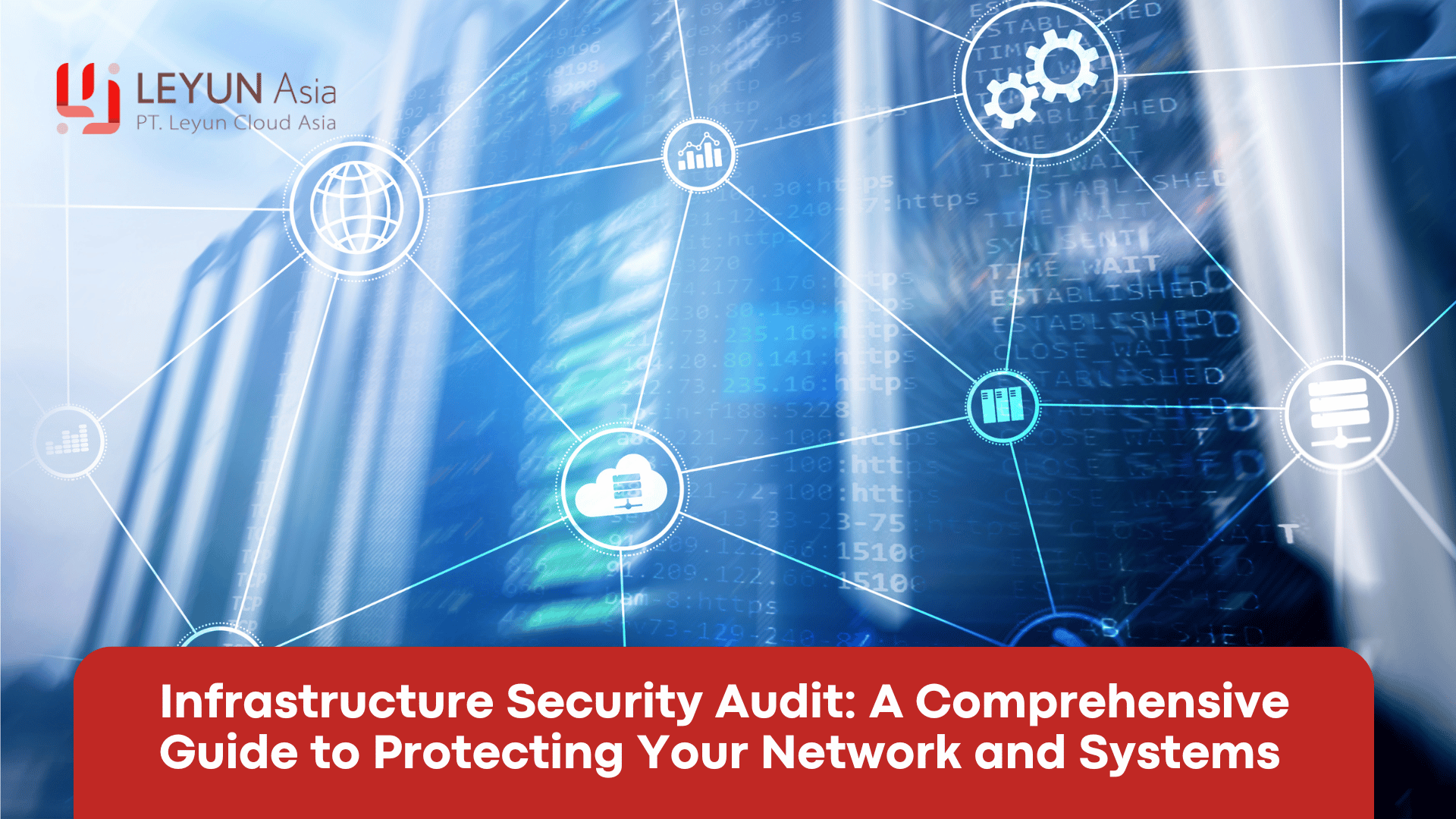As businesses increasingly rely on complex digital infrastructure to drive their operations, securing this infrastructure has become more critical. Cybersecurity threats are evolving alarmingly, and any vulnerability in your infrastructure could provide cybercriminals with a way in. An Infrastructure Security Audit is a comprehensive assessment that helps identify and address security weaknesses in an organization’s IT infrastructure, including hardware, software, network configurations, and physical security measures.
An infrastructure security audit evaluates the security posture of your systems, ensuring they are protected against cyber threats and aligned with industry standards and regulations.
In this article, we will dive into what an infrastructure security audit entails, why it’s important, the components involved, and the benefits of conducting such audits regularly.
What is an Infrastructure Security Audit?
An Infrastructure Security Audit is a detailed evaluation of an organization’s IT infrastructure to identify security gaps, vulnerabilities, and risks. The goal of an audit is to ensure that all aspects of the infrastructure, from the network to hardware and software, are securely configured and protected against potential cyber threats.
The audit process typically involves:
- Assessing network security, including firewalls, routers, and switches.
- Evaluating access controls, such as user authentication and privileges.
- Reviewing software and application security, ensuring that applications are patched and secure.
- Testing for vulnerabilities within operating systems, devices, and connected systems.
- Evaluating physical security measures to protect the hardware and data centers from unauthorized access.
Through these measures, a security audit provides insights into potential vulnerabilities and areas for improvement, enabling businesses to enhance their defenses.
Why is an Infrastructure Security Audit Important?

An Infrastructure Security Audit is crucial for several reasons, as it ensures that the organization’s IT systems are protected from threats, compliant with regulations, and functioning efficiently. Here are some key reasons why it is important:
- Identify Vulnerabilities and Weaknesses
One of the most critical reasons to conduct an infrastructure security audit is to identify system vulnerabilities. Cyber attackers continuously develop new methods to exploit weaknesses in networks and systems. An audit helps identify these gaps before they can be exploited by malicious actors, reducing the risk of data breaches, malware infections, and ransomware attacks. - Enhance Compliance with Industry Regulations
Many industries require organizations to comply with strict data protection and security regulations, such as GDPR (General Data Protection Regulation), HIPAA (Health Insurance Portability and Accountability Act), and PCI-DSS (Payment Card Industry Data Security Standard). A security audit helps ensure that your infrastructure meets these standards and can help you avoid penalties for non-compliance. - Protect Sensitive Data
IT infrastructure often handles sensitive data, including personal information, financial records, and proprietary business data. A security audit helps ensure that your infrastructure is adequately secured to protect this sensitive information from theft, unauthorized access, or accidental exposure. - Mitigate Financial and Reputational Risks
A successful cyberattack can have severe financial and reputational consequences. Data breaches can lead to significant costs related to legal fees, fines, damage control, and a loss of customer trust. By conducting regular infrastructure security audits, businesses can reduce the likelihood of attacks and protect their bottom line and reputation. - Maintain Business Continuity
Cyberattacks and system failures can result in downtime that disrupts business operations. A robust security posture, supported by regular audits, helps ensure that your IT infrastructure is resilient, minimizing downtime and maintaining business continuity.
Components of an Infrastructure Security Audit

An infrastructure security audit thoroughly assesses several key components of an organization’s IT environment. These include:
- Network Security
The network is the backbone of any organization’s infrastructure, and its security is paramount. During an audit, security professionals will evaluate network traffic, firewall configurations, and intrusion detection systems (IDS) to ensure that your network is protected from unauthorized access and potential attacks. Key areas assessed include:- Firewall and router configurations
- VPN (Virtual Private Network) usage and security
- Access control lists (ACLs)
- Wireless network security
- Vulnerability scanning for open ports and weak points
- Server and Endpoint Security
Servers and endpoints like computers, laptops, and mobile devices are critical access points to your network and sensitive data. An audit examines these devices for vulnerabilities such as outdated software, unpatched operating systems, and weak user credentials. Key components assessed include:- Patch management and software updates
- Antivirus software and endpoint detection
- Authentication and access controls
- Device encryption
- Application Security
Applications are often a target for cyberattacks, as attackers can exploit vulnerabilities in code or misconfigurations. A security audit will assess the security of both in-house and third-party applications. This includes reviewing the application’s source code for vulnerabilities like SQL injection, cross-site scripting (XSS), and insecure data handling. Key components assessed include:- Web application security (e.g., input validation, authentication mechanisms)
- API (Application Programming Interface) security
- Source code and application vulnerability scanning
- Patch management for application vulnerabilities
- Identity and Access Management (IAM)
Access to sensitive data and systems should be restricted to authorized users. An IAM audit ensures that user accounts are properly managed, with strong authentication mechanisms and access controls. This includes reviewing:- User access policies (e.g., least privilege access)
- Authentication methods (e.g., multi-factor authentication)
- Role-based access control (RBAC)
- User account provisioning and de-provisioning procedures
- Data Protection and Encryption
Data confidentiality and integrity are crucial to preventing unauthorized access. A security audit will evaluate how sensitive data is stored, processed, and transmitted across your network. This includes reviewing encryption practices and ensuring that data is adequately protected. Key areas assessed include:- Data encryption at rest and in transit
- Secure key management
- Data masking and tokenization
- Backup and recovery processes
- Physical Security
Physical security is an often overlooked aspect of infrastructure security. Physical access controls to data centers, server rooms, and other sensitive areas are assessed during an audit. This ensures unauthorized individuals cannot physically tamper with equipment or steal data. Key components assessed include:- Security of data centers and physical infrastructure
- Access control for sensitive areas (e.g., badge access, biometric scans)
- Surveillance and monitoring
- Cloud Security
As more organizations move to cloud environments, the security of cloud-based infrastructure is critical. The audit will assess cloud security measures, including access controls, data storage security, and secure configurations for cloud services. Key components assessed include:- Cloud service provider security controls (e.g., AWS, Azure)
- Cloud application security
- Data encryption in the cloud
- Identity and access management for cloud resources
Read More: What Is Next Gen Waf Cyber Security
How to Conduct an Infrastructure Security Audit

Conducting an Infrastructure Security Audit involves a systematic evaluation of your organization’s IT infrastructure to identify vulnerabilities, risks, and areas of non-compliance. Here’s a step-by-step guide on how to conduct an effective security audit:
- Define the Scope and Objectives
Before beginning the audit, defining the scope and objectives is essential. Identify which systems, networks, and applications will be assessed and determine what specific security standards or regulations must be met. - Perform a Risk Assessment
A risk assessment should be conducted to identify potential threats and vulnerabilities within the infrastructure. This helps prioritize the areas that need the most attention during the audit. - Conduct Vulnerability Scanning
Use automated tools to scan the network, servers, and applications for known vulnerabilities. These tools can identify weaknesses that need to be addressed before a full audit is performed. - Perform Manual Testing
Manual penetration testing and security assessments should be conducted to simulate real-world attacks. This helps uncover vulnerabilities that automated tools may not detect. - Generate a Report
After the audit, a detailed report outlining the vulnerabilities discovered their potential impact, and recommended remediation steps should be generated. The report should include actionable recommendations for improving security. - Implement Remediation Measures
Based on the findings, work to fix the identified vulnerabilities. This may involve applying patches, configuring firewalls, strengthening authentication methods, and implementing additional security controls.
Benefits of an Infrastructure Security Audit
An Infrastructure Security Audit offers numerous benefits that help businesses strengthen their security posture, optimize operations, and reduce risks. Here are some key advantages:
- Enhanced Security
By identifying and addressing vulnerabilities, security audits help strengthen your infrastructure’s defenses, preventing unauthorized access, data breaches, and other cyberattacks. - Improved Compliance
Regular infrastructure audits help ensure compliance with industry regulations, minimizing the risk of non-compliance penalties and reputational damage. - Business Continuity
Auditing your infrastructure ensures that critical systems are protected, reducing downtime and maintaining business continuity in the event of an attack. - Reduced Risk
A proactive security audit helps mitigate the risk of a successful cyberattack by identifying vulnerabilities before attackers can exploit them.
Conclusion
An Infrastructure Security Audit is an essential practice for any organization looking to safeguard its digital assets from the growing threat of cyberattacks. By systematically evaluating your infrastructure, identifying vulnerabilities, and implementing remediation measures, you can protect sensitive data, maintain regulatory compliance, and reduce the risk of disruptions to your business. Regular audits enhance security and contribute to the long-term success and stability of your organization’s IT environment.
If you need protect your website for your Company or organization, contact us here for more information.

